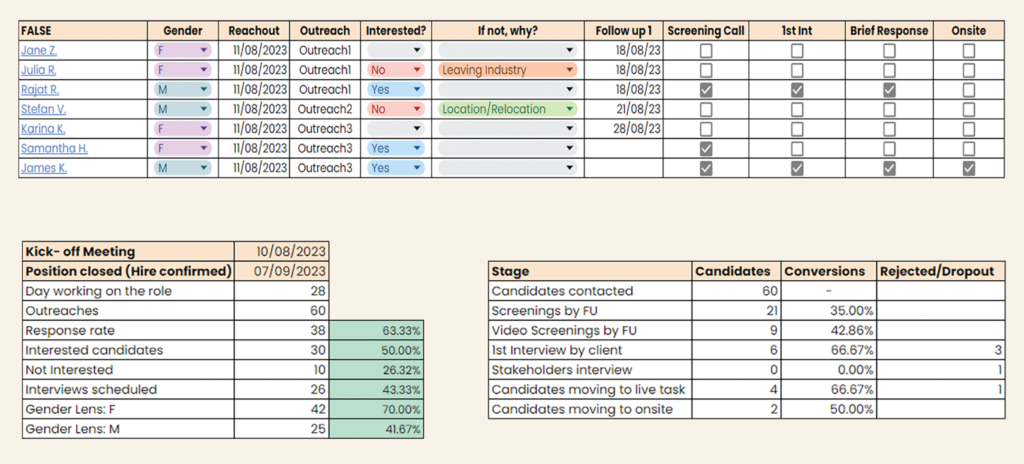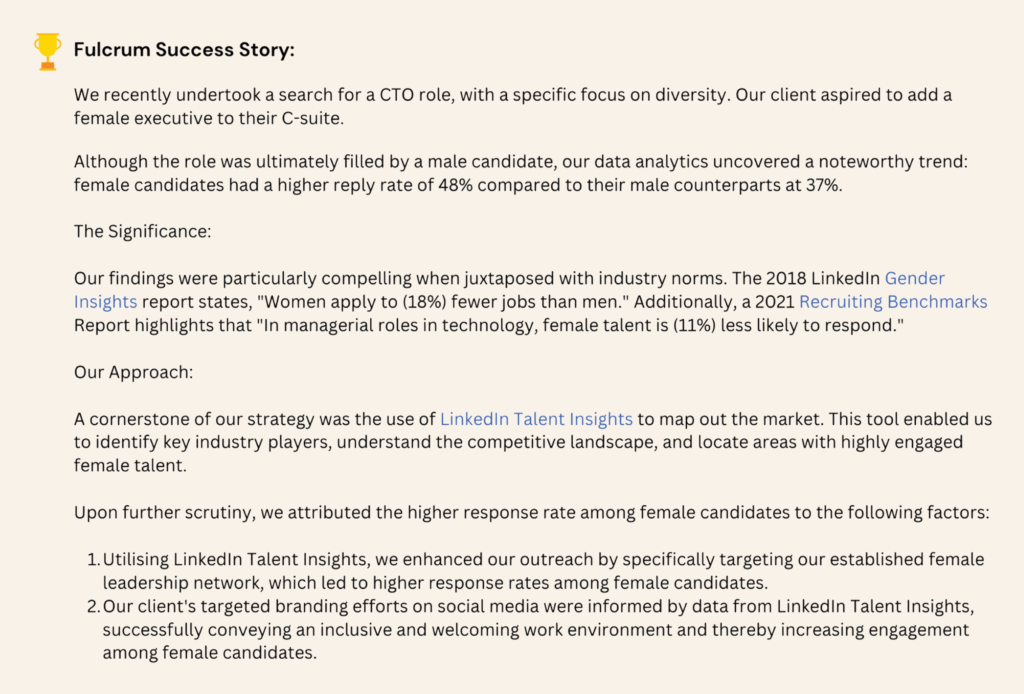< Back to all blogs
The Synergy of Data and Strategy in Talent Sourcing

Tue, 19 Sep, 2023
In the constantly evolving landscape of recruitment, a new champion has emerged – data. With a staggering 73% of enterprise talent leaders asserting the critical role of data in staying competitive in 2022, data-driven talent sourcing has shifted from being an optional strategy to an absolute necessity. The ability of data to reveal hidden insights, predict future trends, and guide decisive actions is a resource that cannot be overlooked. This article aims to shed light on the concept of data-driven talent sourcing, its significance, the benefits it offers at both individual and organisational levels, and some best practices to excel in this data-centric approach to sourcing.
Understanding Data-Driven Talent Sourcing and Its Significance
Being data-driven, in this context, involves the collection of data and identification of patterns within it to facilitate and shape superior decision-making processes. By examining the behaviour of both your current and historical data, you can uncover areas of opportunity, establish a better approach to your sourcing efforts, and utilise a competitive edge to attract the most qualified candidates.
Advantages of Adopting a Data-Driven Sourcing Mindset
Adopting a data-driven mindset in talent sourcing is more than just a choice. It’s a strategic leap forward, offering numerous benefits. Here are some of the key advantages you can reap:
- Enhance productivity and efficiency: Through the measurement of your data, you can gain insights into the strengths and weaknesses of your process. For example, monitoring reply rates across various outreach messages can reveal the most effective ones. This knowledge enables you to refine your methods for increased efficiency.
- Predict your hiring pace: Analysing historical data related to the time spent on filling a role can give you patterns and characteristics to establish a timeline for future hires. 69% of talent leaders admit to using historical data for future-looking activities. It can also help you pinpoint the bottlenecks that are slowing down your recruitment process.
- Enhance diversity in your recruiting process: If your objective is to improve diversity ratios, tracking significant demographic data such as gender, ethnicity, and others can help you understand your pipeline and devise strategies to increase diversity in your process. According to a Glassdoor survey, over 3 out of 4 job seekers and employees (76%) report that a diverse workforce is a crucial factor when evaluating companies and job offers.
- Elevate the candidate’s experience: Monitoring your data can assist you in improving the candidate experience in numerous ways, such as identifying the pain points in the application process, creating realistic job previews that accurately convey the candidate’s expectations, determining the optimal timing for follow-up communications, and more.
- Proactive Talent Pooling: Data-driven talent sourcing enables you to build and maintain talent pools of passive candidates who may not be actively looking for jobs. When suitable positions arise, you can tap into these pools, reducing the time and effort needed to identify potential candidates.
Best Practices for Tracking Your Data
When it comes to data tracking in talent sourcing, adopting best practices can make a significant difference in leveraging insights to reach your recruitment goals. Here are some tried-and-tested strategies to guide your data-driven journey:
- Identify Key Metrics: Determine the specific metrics and KPIs (Key Performance Indicators) that align with your recruitment goals. For instance, if your company’s objective is to increase the percentage of gender-diverse candidates, you can track the gender of your candidates to understand your sourcing efforts and adjust them. Other common metrics include the source of hire, time-to-fill, time-to-hire, cost-per-hire, applicant conversion rates, and quality of hire.
- Implement an Applicant Tracking System (ATS): If possible, utilise a robust ATS that enables you to collect, organise, and analyse candidate data. There are multiple tools that incorporate analytics features and automation that can enhance your process. However, you can track your data in a simple Google Sheet if you lack a modern ATS. Here’s an example of the kind of data you can track:

- Benchmarking: Compare your sourcing metrics against industry benchmarks to gain a better understanding of your organisation’s performance and identify areas for improvement.

- Consistent Reporting: Generate regular reports that summarise your key metrics and insights related to your recruitment efforts. These reports provide a clear snapshot of your sourcing performance, help stakeholders understand the progress toward recruitment goals, and guide strategic decision-making.
Conclusion
The path to becoming an exceptional Talent Sourcer has evolved in the dynamic landscape of modern recruitment. A data-driven approach has emerged as the beacon, revealing opportunities and insights that shape the way forward. By harnessing the power of data, Talent Sourcers can enhance efficiency, forecast hiring trends, champion diversity, and elevate the candidate experience. As the rhythm of recruitment beats to the pulse of data, each sourced candidate becomes a piece of a strategic puzzle, contributing to an organisation’s growth and success.
Continue reading
Get Ready for the Phone Screen: Essential Dos and Don’ts
Have you ever received a call from a recruiter or hiring manager asking if you have…
Read More Get Ready for the Phone Screen: Essential Dos and Don’ts
Subtle Signs Your Employer Brand Might Need Some Work
Employer branding is often an overlooked, but essential part of the recruitment process. Done well, it…
Read More Subtle Signs Your Employer Brand Might Need Some Work
Top Talent Leaders Challenges in 2024
The talent landscape is constantly evolving, and talent leaders will face a unique set of challenges…



